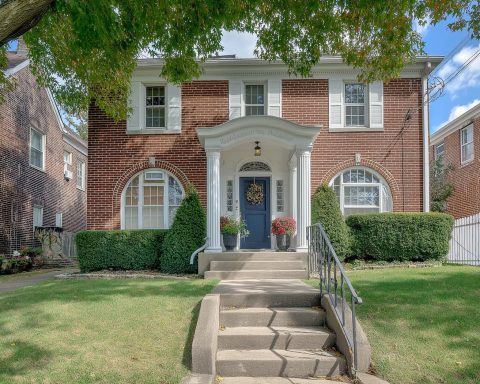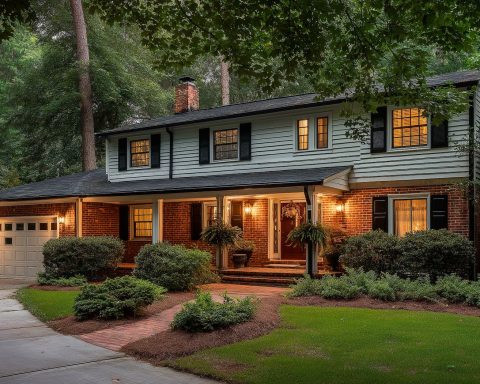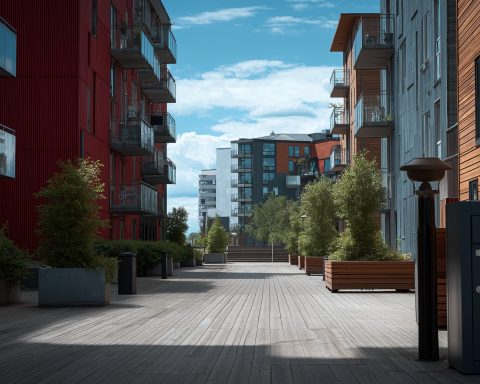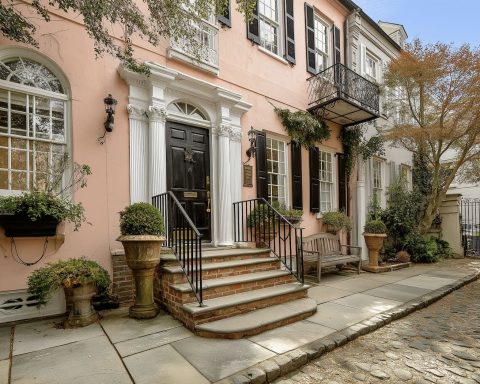- $800M Trophy Office Deal in Europe: Blackstone confirmed the €700 million ($819 million) acquisition of a historic Paris office complex, signaling renewed investor appetite for prime office assets reuters.com. The century-old Trocadéro property includes offices and 57 luxury apartments, and drew multiple bidders in a rare post-pandemic trophy sale reuters.com reuters.com.
- Major U.S. Transactions Unfold: Apollo Global Management completed its takeover of Bridge Investment Group in an all-stock deal to scale up Apollo’s real estate platform bridgeig.com. In San Francisco, a New York investor trio agreed to buy the city’s two largest hotels (~3,000 rooms) after the prior owner’s mortgage default – a sign of both distress and revival in the urban hospitality market sfchronicle.com sfchronicle.com.
- Policy Shifts to Spur Housing: China’s biggest cities eased home-buying restrictions, sparking a surge in sales as pent-up demand was released yicaiglobal.com yicaiglobal.com. The Bank of England cut interest rates for the first time in years (to 4.0%), aiming to alleviate a housing affordability crunch in the UK reuters.com. Meanwhile, Saudi Arabia enacted a law (effective 2026) to allow foreign property ownership, part of sweeping efforts to attract investment pinsentmasons.com.
- Housing Market Cooldown and Trends: New U.S. home sales dipped 0.6% in the latest data, with the median price down ~6% year-on-year as high mortgage rates sideline buyers reuters.com reuters.com. British house prices fell 0.1% in August – the third monthly decline since spring – leaving annual growth at just 2.1% reuters.com. In China, new home prices are still slipping, but declines are slowing as local governments roll out buyer incentives reuters.com reuters.com.
- Booming Middle East Markets: Dubai’s real estate rally continues unabated – property sales jumped 40% in H1 2025 to AED 326.6 billion ($89B) compared to last year wam.ae. A single luxury villa resale on Palm Jumeirah fetched AED 160.5 million (~$43.7M), one of Dubai’s priciest deals ever semafor.com. Saudi Arabia reports homeownership at 65.4% of families (exceeding its 2025 target) amid $100B+ of housing projects and cheap credit for buyers arabnews.com zawya.com.
- Expert Insights – Caution Amid Optimism: Industry voices note a persistent “deferral mindset” among buyers and sellers, who are delaying moves due to high rates, economic uncertainty and other “what-ifs” growatcompass.com growatcompass.com. NAHB’s chief economist argues that affordability won’t improve materially until interest rates come down, urging central banks to resume rate cuts to “indirectly help mortgage interest rates” nahb.org. Yet investors like Blackstone say the right assets in prime locations still offer “compelling opportunities” despite broader market jitters reuters.com.
Major Transactions & Investment Moves
Big-ticket deals grabbed headlines in multiple regions. In Europe, Blackstone’s €700M purchase of the Centre d’Affaires office complex in Paris exemplified how opportunistic investors are pouncing on high-quality properties even as the broader office market struggles reuters.com reuters.com. This landmark deal – buying from Germany’s Union Investments which paid only €284M in 2003 – underscores that premium offices in prime locations can still command interest, despite a pandemic-era tumble in office values. Blackstone’s head of European real estate noted “confidence in the European office market” for “the right assets in prime locations” reuters.com, hinting that major funds see value in beaten-down segments like top-tier offices.
In the United States, consolidation and distress transactions are reshaping the landscape. Apollo Global Management’s acquisition of Bridge Investment Group closed on Sept. 2, folding Bridge’s $43+ billion real estate investment business into Apollo’s platform bridgeig.com. Apollo’s leadership hailed the deal as “an important step” that gives Apollo immediate scale in real estate equity and new capacity to originate deals across growing sectors bridgeig.com. On the distressed side, San Francisco’s two largest hotels – the Hilton Union Square (1,921 rooms) and Parc 55 (1,024 rooms) – are being sold out of receivership after owner Park Hotels & Resorts walked away from the mortgage in the face of post-COVID downtown woes sfchronicle.com sfchronicle.com. A court-appointed receiver has selected Newbond, Witkoff and Conversant (NY-based investors) to buy the hotels, with a court hearing set for Sept. 25 to approve the sale sfchronicle.com sfchronicle.com. While the price is redacted, it required $20 million in deposits and is likely among the biggest San Francisco property deals in years, reflecting both the steep pandemic-era valuation drop and nascent optimism as tourism rebounds (SF is expecting 23.5 million visitors this year) sfchronicle.com. Observers cite this deal as a bellwether for downtown recovery, with the buyers betting on a long-term turnaround in the city’s hospitality and convention market sfchronicle.com sfchronicle.com.
Other notable transactions include a $165.5 million industrial portfolio sale in Southern California. MetLife Investment Management sold a trio of fully leased warehouse properties (~600,000 sq. ft. combined in Redondo Beach, Carlsbad, and City of Industry) to three separate buyers cushmanwakefield.com cushmanwakefield.com. The healthy pricing and quick sale of this “Golden Coast” logistics portfolio demonstrate that industrial real estate remains a hot ticket, with investors confident in high-demand logistics hubs. “These assets offer a rare blend of operational efficiency and long-term value”, said one broker, noting the sale’s success highlights the strength and resilience of Southern California’s industrial market even as other sectors soften cushmanwakefield.com cushmanwakefield.com.
In Middle Eastern markets, eye-popping luxury deals are regularly setting records. Dubai in particular is in the midst of a property boom: property sales totaled AED 326.64 billion in the first half of 2025, up 40% year-on-year wam.ae. August alone saw AED 51.1 billion ($13.9B) in sales across 18,678 transactions – a 15% jump in volume from a year prior economymiddleeast.com. One headline-grabbing transaction was the resale of a Palm Jumeirah villa for AED 160.5 million (~$43.7M) to a European buyer semafor.com. This mega-deal, among the priciest home sales ever in Dubai, underscores how ultra-rich investors continue to pour money into UAE real estate for its tax-free, investor-friendly environment. Such demand has propelled Dubai to record-high sales and prices in 2025, with strong off-plan (pre-construction) buying and a steady influx of foreign capital economymiddleeast.com.
Cross-border investment flows also remain significant. U.S. real estate continues to attract foreign buyers, notably from Latin America and Asia. In fact, international buyers snapped up $56 billion of U.S. homes from April 2024 to March 2025, a 33% increase from the prior year builderonline.com uk.finance.yahoo.com. Nearly half of that foreign investment came from Latin American and Caribbean buyers focusing on markets like South Florida discoversouthflorida.com. This highlights a post-pandemic resurgence of global investor interest in residential property, particularly in sunbelt states, even as domestic U.S. demand cools.
Policy & Regulatory Changes
Government and regulatory actions in early September centered on stimulating housing markets and curbing abuses. In China, authorities rolled out high-profile easing measures to stabilize the slumping property sector. On Aug. 26, Shanghai lifted home-purchase limits in suburban areas – allowing qualified buyers to purchase unlimited homes beyond the Outer Ring Road – and enhanced credit support for homebuyers yicaiglobal.com yicaiglobal.com. This followed Beijing’s similar relaxation in early August. The impact was immediate: showroom traffic surged “50% week-on-week” after Shanghai’s policy change, and a new 1,000-unit development sold out 160 apartments in one day yicaiglobal.com yicaiglobal.com. Second-hand home sales in Shanghai also spiked above 1,100 units on Aug. 30 – the first time in two months that daily resale transactions topped the thousand mark yicaiglobal.com yicaiglobal.com. Local experts said these targeted policies (removing purchase caps and lowering down-payment requirements for those improving their housing) are unleashing suppressed demand and could help trim the city’s housing inventory yicaiglobal.com yicaiglobal.com. Beijing, for its part, had just scrapped homebuying curbs in its outlying districts while maintaining restrictions in the city core reuters.com. These moves are part of a broader Chinese campaign to restore confidence in a sector that has seen prices, sales, and new construction all fall sharply over the past four years reuters.com reuters.com. Officials are also expanding financing support for select developers and pushing banks to lower mortgage rates, trying to engineer a soft landing for the once-sizzling market.
Central banks are adjusting course as inflation shows signs of cooling, which could bring relief to real estate markets. In the UK, the Bank of England cut its benchmark rate by 25 bps to 4.0% on August 7 – its first rate reduction in years – after a string of aggressive hikes reuters.com. The BoE signaled, however, that further easing will be cautious due to persistent inflation pressures. This policy pivot comes as Britain’s housing market has markedly slowed: Nationwide data show house prices unexpectedly fell 0.1% from July to August and annual price growth slipped to just 2.1%, the weakest since mid-2024 reuters.com. The rate cut should eventually ease mortgage costs (an average first-time buyer is spending 35% of take-home pay on mortgage payments, vs ~30% long-run norm) reuters.com, but the BoE’s mixed messaging (rate cuts and talk of sticky inflation) has left some UK buyers on edge. The Royal Institution of Chartered Surveyors noted that a tentative summer uptick in buyer inquiries has “lost steam”, partly as speculation grows that the new government could raise property taxes (e.g. a high-value “mansion tax”) in the next budget reuters.com reuters.com. That tax uncertainty is another headwind for demand in London’s prime market.
In the United States, regulators turned their focus to competition and rents. The Department of Justice in August proposed a settlement with property management giant Greystar Real Estate to resolve allegations of rent price-fixing via algorithmic leasing software reuters.com. Greystar and others were accused of using a shared software platform to coordinate rental pricing, driving up apartment rents artificially. The case – one of the first antitrust actions targeting the growing use of revenue-management algorithms in real estate – signaled a broader regulatory intent to protect tenants from collusive pricing practices. If approved, the settlement would bar Greystar from using such rent-setting tech and require compliance monitoring reuters.com. Concurrently, policymakers are debating proposals to tackle housing affordability: notably, former President Donald Trump floated ending capital gains tax on home sales entirely (beyond the current $250k/$500k exemption) as a way to spur housing turnover reuters.com. While merely a campaign talking point at this stage, the idea of eliminating home sale taxes garnered attention; analysts warned it could “reignite” housing demand and push prices higher if implemented reuters.com, though it’s viewed as unlikely in the near term.
Several countries moved to liberalize property ownership and financing rules. In Saudi Arabia, a new law was issued allowing foreign individuals and companies to own real estate assets in the Kingdom (something historically heavily restricted). This reform, set to take effect in early 2026, is expected to “transform Saudi’s real estate market” by opening the floodgates to international buyers and institutional investors pinsentmasons.com. It complements Saudi Arabia’s ongoing initiatives (like the Sakani program) to increase homeownership among citizens via subsidized mortgages and vast new housing developments. Indeed, Saudi officials just announced the nation already exceeded its 2025 homeownership target – reaching 65.4% of families owning homes by end-2024 arabnews.com – a milestone achieved through aggressive government-supported lending and construction efforts. Elsewhere, India and Southeast Asian governments remained active with housing policies (from interest rate subsidies for first-time buyers to urban redevelopment schemes), although no major new policies were unveiled on Sep 2–3.
Market Trends & Data
Global housing markets are navigating a stark divide: affordability constraints and high financing costs are cooling demand in many countries, yet supply shortages and strong household balance sheets are keeping a floor under prices in others. In the United States, the latest data confirm a continued housing cooldown from 2022’s frenzied pace. New home sales in July fell to a 652,000 annual rate, down 0.6%, and are 8.2% lower year-on-year reuters.com reuters.com. Builders have pulled back slightly on starts, and more importantly, they are resorting to price cuts and incentives to move inventory. The median price of a new home dropped to $403,800 – nearly 6% lower than a year ago – as roughly 37% of U.S. builders cut prices in August to entice buyers nahb.org. New home supply, while dipping a bit, remains elevated at 499,000 units for sale (near 2007 highs) reuters.com. “Affordability continues to be the top challenge”, said NAHB Chairman Buddy Hughes, noting that many buyers are simply waiting on the sidelines for mortgage rates to fall nahb.org. With 30-year mortgage rates hovering ~6.6–7% – double pre-pandemic levels – it’s no surprise home sales are subdued. Mortgage purchase applications and pending sales data indicate the housing slump may persist through year-end unless borrowing costs ease reuters.com reuters.com.
However, the expected shift in monetary policy could soon alter this trajectory. Fed Chair Jerome Powell has signaled that, given cooling inflation and a softer labor market, the Fed might begin cutting rates at its mid-September meeting reuters.com. Markets anticipate roughly 75 bps of Fed rate reductions by year-end reuters.com. Mortgage rates have actually dipped from their peak (the 30-year fixed hit 7.0%+ in early 2025, now ~6.5%) on these expectations reuters.com. If the Fed delivers cuts, housing demand might catch a second wind – though likely modest. As one economist cautioned, “if prices continue to rise, it’s going to be tough to see a material improvement in affordability” even with lower rates reuters.com. For now, U.S. home prices have been surprisingly resilient (Case-Shiller national index is just slightly off its 2022 high), largely because supply is constrained – many homeowners with 3% mortgages are refusing to sell, creating an acute shortage of existing homes on the market (active listings remain ~33% below pre-pandemic norms) reuters.com reuters.com.
In Europe, housing trends are turning mixed. The UK saw a mini-bounce in early 2025 that now appears to be fading: after a strong spring, higher mortgage costs (now around 6% for 2–5 year fixes) and the end of a tax holiday have cooled activity. Nationwide’s data for August showed the first monthly price drop since May reuters.com. Year-on-year, UK prices are still up 2.1%, but that is a sharp comedown from ~5% annual gains at 2022’s end reuters.com. Surveyors report buyer enquiries and sales volumes are below average, and average selling prices are being negotiated 3–5% below asking on many deals (a sign of a buyer’s market returning). On the continent, Germany and Scandinavia have experienced price corrections of ~5–10% from 2022 peaks, according to various indexes, as sharply higher interest rates bite. However, France and Southern Europe have been more stable – for instance, French home prices are roughly flat year-on-year, with continued demand in coastal and rural areas offsetting softer Parisian prices (the Paris office sale noted earlier notwithstanding). Housing rents across Europe are climbing at the fastest pace in years (often +5% to +10% annually) as would-be buyers stay in rental markets due to mortgage pressures. This has prompted political debate about rent controls in cities like Dublin, Stockholm, and Berlin, though no new major rent caps were enacted in this roundup period.
One positive sign: global house price downturns are broadly easing. A Reuters analysis noted that, after declines in 2022–23, most major markets are now either stabilizing or rising modestly again reuters.com. For example, China’s home price declines have narrowed – new home prices fell 0.3% month-on-month in July, a smaller drop than prior months, and year-on-year falls (-2.8%) are less steep than earlier in 2025 reuters.com reuters.com. Tier-1 Chinese cities even saw tiny price gains in secondary markets after policy easing. Similarly, Australia saw prices begin rising again: despite the Reserve Bank of Australia holding rates at a 12-year high of 4.35% through late 2024, Australian house prices still rose about 5% last year reuters.com and hit a record high in May 2025 reuters.com. A Reuters poll forecasts Australia’s home values will keep growing ~4–5% annually over the next three years reuters.com reuters.com. Analysts attribute this to chronic undersupply and population growth, and they note that the 50 bps of RBA rate cuts delivered in 2025 (with another ~50 bps expected) will support the market even if they don’t ignite a price surge reuters.com reuters.com.
Commercial real estate trends remain bifurcated by sector. Office markets worldwide are under strain as high vacancies and remote-work adjustments persist. Major financial hubs (New York, San Francisco, London, Hong Kong) report office vacancy rates at or near record highs, and valuations for older buildings have plunged. Big sales are few – Blackstone’s Paris deal is an outlier driven by a unique trophy asset. More common are loan defaults and restructurings: in the U.S., office loan delinquency rates have climbed, and some high-profile office towers have traded at 30–50% discounts from pre-COVID values. Conversely, industrial and logistics real estate is still booming on strong e-commerce and manufacturing shifts. Warehouse vacancies in many markets (e.g. Mexico’s border cities, U.S. Inland Empire, Southern Vietnam) are at record lows, and rents keep rising. The Southern California industrial portfolio sale mentioned earlier, at over $275 per sq. ft., reflects these robust fundamentals cushmanwakefield.com cushmanwakefield.com. Retail real estate is recovering unevenly – high-street retail in Europe and Asia is rebounding with tourism, while U.S. suburban shopping centers are benefitting from population shifts. Hotel investment in Asia Pacific has slowed (down ~23% in H1 2025 year-on-year) travelandtourworld.com, but globally, hospitality assets are drawing interest now that travel has normalized. Notably, Middle Eastern and Asian investors are hunting for hotel bargains in Western cities, hoping to ride a travel upswing into 2026.
Expert Insights & Commentary
Real estate experts and industry leaders are striking a cautious tone even as they point out emerging opportunities. A recurring theme is the impact of high interest rates on psychology. Leonard Steinberg, a veteran luxury broker and market observer, describes a “deferral mindset” gripping many buyers and sellers: “Consumers are delaying major decisions – whether it’s renovating a home or purchasing one,” he says, due to a laundry list of uncertainties from rates and tariffs to job security and geopolitics growatcompass.com growatcompass.com. This “culture of hesitation” means real estate decisions that might normally happen today are being put off in hopes of a clearer or better market tomorrow. However, Steinberg cautions that waiting can backfire: “If rates drop sharply, it’s usually because the economy is weakening… and when rates do drop, demand jumps – prices tend to rise and inventory shrinks,” he notes growatcompass.com. His advice to clients is to base decisions on personal needs and financial readiness rather than trying to time an uncertain market growatcompass.com, essentially arguing that the cost of waiting could equal the cost of acting in such a dynamic environment.
Economists also emphasize that affordability remains front and center. “Housing affordability is central to the outlook for economic growth and inflation,” says Robert Dietz, Chief Economist of the National Association of Home Builders nahb.org. He and others are lobbying the U.S. Federal Reserve to begin easing monetary policy sooner rather than later. With the NAHB Housing Market Index stuck in bearish territory (builder sentiment has been negative for 16 straight months and was at 32 in August, on a scale where >50 is good) nahb.org nahb.org, builders argue that rate relief is needed. Dietz warns that without lower financing costs, the U.S. housing shortfall will persist and new construction (a key economic driver) will stay depressed nahb.org. Similarly in Europe, property consultancies note that mortgage spreads (the margin banks charge above base rates) have widened, compounding the impact of central bank hikes. Thus even as base rates peak or fall, “it may take time for mortgage rates to noticeably decline – lenders are still wary,” one UK analyst commented.
On the investment front, large asset managers remain selectively bullish. Blackstone’s head of European real estate, James Seppala, commented on their Paris acquisition: “This acquisition underscores our confidence … that the right assets in prime locations continue to offer compelling opportunities” reuters.com. In other words, while average offices or secondary locations might be struggling, prime assets – whether a trophy Paris office, a luxury hotel, or a best-in-class apartment building – are seen as long-term winners. Private equity giant Apollo, in announcing the Bridge Investment deal, similarly expressed optimism about “secular growth areas” in real estate and the ability to invest across market cycles bridgeig.com. Apollo is reportedly targeting sectors like logistics, data centers, affordable housing, and infrastructure-linked real estate, which are expected to outperform even if the economy softens.
Regional experts provided additional color: In South America, analysts from Banco de la República (Colombia’s central bank) and others note a gradual recovery in markets like Colombia, where housing sales are up 4% this year after two years of declines globalpropertyguide.com. “Disinflation is leading to real income gains for households, supporting the recovery,” according to a World Bank report thedocs.worldbank.org – a trend that could play out across emerging markets as inflation retreats from its 2022 highs. African real estate investors, gathering at the upcoming API Summit in Cape Town, are highlighting the increasing role of local institutional capital. With global capital more risk-averse, African pension funds are stepping in to finance projects in Nairobi, Lagos, Johannesburg and beyond, focusing on sectors like affordable housing and green developments africabusiness.com. This homegrown investment is seen as critical to meeting Africa’s urbanization and housing challenges.
Finally, industry advocates continue to push for structural reforms to unlock supply. In the U.S., the National Association of Realtors and homebuilders are urging zoning and permitting reform to ease the chronic housing shortage (the U.S. is short an estimated 4 million homes). In Europe, developers are lobbying for faster approvals on energy-efficient retrofits and new builds, arguing that meeting climate goals and housing needs can go hand-in-hand with the right incentives. These longer-term issues underlie the day-to-day news: whether it’s a mega-deal or a policy tweak, the fundamental drive is to adapt to a world of higher capital costs, shifting demographics, and evolving work patterns.
Regional Highlights
United States
The U.S. real estate market in early September 2025 is characterized by cooling residential activity but pockets of resilience. High mortgage rates (hovering ~7% for 30-year loans) and still-elevated prices have pushed housing affordability to near multi-decade lows, resulting in muted sales. July’s new home sales were down, and existing-home sales (notably, not part of this 2-day news window but trending) remain around 15% below year-ago levels. Home prices, however, have been sliding very gradually rather than crashing – median existing-home price was up ~2% y/y in June homesforheroes.com, and the Case-Shiller 20-city index shows only a mild dip from 2022’s peak. Inventory is the Achilles’ heel: homeowners with ultra-low interest rates are not moving, so only about 3 months’ supply of homes are on the market (half of what’s considered healthy). This is preventing a sharper correction in prices.
In commercial real estate, the U.S. presents a mixed picture. Office: Downtown office occupancy is still only ~50% of pre-COVID norms in many cities, and secondary office values are deeply depressed. Retail: Retail real estate is bifurcated – malls remain challenged, but grocery-anchored centers and upscale lifestyle centers are performing well. Industrial: Warehouse and distribution facilities are a standout performer, with near-record low vacancy (~3.5% nationally) and rent growth in double digits year-over-year in key logistics hubs. Multifamily rentals: Apartment vacancy has inched up to ~7% from a low of ~5.5%, as a wave of new supply hits the market, but rent growth is still positive in most Sunbelt markets. Notably, a DOJ lawsuit against RentPath/RealPage (mentioned above) is putting scrutiny on how large landlords set rents reuters.com, which could lead to changes in multifamily revenue management practices.
On the policy side, beyond the DOJ action, various housing initiatives are percolating. The Biden administration’s efforts to incentivize zoning reform (through grants) and boost affordable housing supply continue, although no major legislation passed in these two days. Some states are taking matters into their own hands – e.g., California’s new laws enabling more accessory dwelling units (granny flats) and converting commercial buildings to residential. These long-term reforms aim to increase density and ease the housing crunch in high-cost areas.
Investor sentiment in the U.S. is cautious but not uniformly negative. The REIT (Real Estate Investment Trust) sector has seen stock prices stabilize in 2025 after a rough 2022–23, particularly for residential and industrial REITs. Office-focused REITs remain under pressure. Cross-border investment into U.S. properties is picking up, with Canadians, Europeans, and LatAm buyers all active. For example, Latin American buyers accounted for 29% of foreign purchases in the U.S. residential market recently, particularly in Florida and Texas discoversouthflorida.com.
Europe
Europe’s real estate markets present a story of divergence between countries and sectors. Residential: The UK’s housing market is cooling notably – August saw a 0.1% MoM price drop and only +2.1% YoY reuters.com. Mortgage approvals are down and first-time buyers are struggling as mortgage rates near 15-year highs. Contrastingly, Spain and France have more stable housing conditions, with modest price growth (~1–4% YoY) and still-solid demand especially in coastal and rural areas as remote-work lifestyle changes persist. Germany is facing a more significant correction in housing: after a multi-year boom, German apartment prices are down roughly 5-10% from 2022 levels (as per private indexes), and some previously overheated markets like Berlin and Munich are seeing price adjustments as borrowing costs pinch. However, Germany’s rental market remains extremely tight, putting political pressure on Berlin’s government to revisit rent control measures that were struck down in 2021.
Commercial: Europe’s office sector is in flux. Paris saw the big Blackstone deal which is a vote of confidence in prime Parisian offices reuters.com, but generally, investors are demanding higher yields given higher financing costs. Office vacancy has risen in many European capitals (e.g. ~ vacancy in London’s City and Canary Wharf is above 10% now, a level not seen in a decade). Logistics real estate is robust across Europe – from Poland to Spain, distribution centers are in demand thanks to e-commerce and reconfigured supply chains (some companies are near-shoring production to Eastern Europe, boosting industrial real estate there). Retail: Continental Europe’s retail property is recovering; foot traffic in high streets and shopping centres is improving as tourism rebounds. For instance, retail rents in prime streets of Milan and Paris are on the rise again.
Regulatory: Europe is also grappling with regulatory changes, especially around sustainability. The EU’s energy-efficiency rules (which will start requiring building upgrades by set dates) are beginning to influence investment decisions – older inefficient buildings may become stranded assets if not refurbished. No new EU-wide laws were passed on Sep 2–3, but industry groups are lobbying for flexibility on green retrofitting timelines. Meanwhile, in the UK, talk of property tax changes (as mentioned, a possible “mansion tax” or adjustment to council taxes) is creating some uncertainty in the prime market reuters.com.
Financing: European lenders have tightened real estate lending, making transactions trickier. Some deals now require creative financing or higher equity contributions. However, with the ECB likely at or near peak rates (and possibly cutting in 2024), the financing environment may improve. In the interim, alternative lenders (private equity, debt funds) are stepping in to fund projects, albeit at higher interest rates than banks.
Asia-Pacific
The Asia-Pacific real estate landscape during this period is defined by China’s property struggles and broader regional resilience. China is the epicenter of concern: the property sector that once contributed up to a quarter of China’s GDP is still working through a severe correction. Property investment fell 12% y/y in Jan–July reuters.com, and big developers like Country Garden and Evergrande remain in financial distress, negotiating debt restructurings. The government’s recent easing measures – lower down payments, mortgage rate cuts for existing loans, looser purchase criteria – are starting to have an effect at the margins (as evidenced by the Shanghai sales rebound yicaiglobal.com yicaiglobal.com), but sentiment is fragile. Many Chinese households remain cautious, as their wealth is heavily tied to housing and prices are still well below the 2021 peak (estimated 20-30% down in many cities) reuters.com reuters.com. Analysts do not expect a full market recovery until 2026 reuters.com. The bright side is that policymakers seem committed to preventing a hard landing – more support (like special loans to finish stalled projects and possible guarantees on developer bonds) is rumored if conditions don’t stabilize.
Outside China, Asia-Pacific markets are faring better. Japan’s real estate market remains buoyant, ironically helped by ultra-low interest rates and the weak yen attracting foreign buyers. Tokyo office vacancy has ticked up only slightly and home prices in Tokyo and Osaka are at record highs, supported by rock-bottom mortgage rates (the Bank of Japan is still maintaining near-zero rates). Australia, as mentioned, has seen a surprisingly quick housing rebound; despite the RBA’s earlier rate hikes, population growth (thanks to returning immigration) and limited housing stock have pushed home values to new heights reuters.com. Now with the RBA cutting rates in 2025 reuters.com, that trend should continue, although affordability in Sydney is extremely stretched (median house price ~11x income). New Zealand is an interesting contrast – after one of the sharpest price corrections (-16% from peak), its housing market is bottoming out as the Reserve Bank of NZ has also begun cutting rates.
In Southeast Asia, markets like Singapore and Vietnam have their own dynamics. Singapore’s property prices are still rising (+7.5% y/y in Q2 for private homes) despite higher interest rates, fueled by wealth inflows and limited supply. The government there has intervened with cooling measures (increased stamp duties for foreigners, tighter loan limits) to try to tame the growth. Vietnam had a property boom that turned to bust in 2023 due to a credit crunch, but recent interest rate cuts by the central bank are gradually reviving activity; investors from Singapore and China are bargain-hunting distressed projects in Hanoi and Ho Chi Minh City.
India continues to see strong real estate demand – both residential and commercial – on the back of robust economic growth ~6% and a burgeoning middle class. Housing sales in major Indian cities were up in 2025, and office leasing is very active with the IT sector expanding. The Reserve Bank of India hasn’t started cutting rates yet (repo rate at 6.5%), but inflation is under control, so financing conditions are stable. One regulatory development: several Indian states are reducing stamp duties or offering limited-period reductions to boost homebuying, and the central government is expanding its affordable housing subsidy scheme (PMAY).
Middle East
The Middle East property markets are largely booming, buoyed by high oil revenues (for Gulf states), economic diversification drives, and significant population growth in key hubs. Dubai is the standout – as noted, it’s posting record transaction volumes and prices in 2025 wam.ae economymiddleeast.com. The luxury segment in Dubai is through the roof: year-to-date, dozens of homes have sold for over $20M, and ultra-prime areas like the Palm Jumeirah and Emirates Hills hit new price-per-square-foot highs. Demand is fueled by an influx of high-net-worth individuals from Europe, Asia, and Russia, seeking a safe haven with sun, security, and no income taxes. The office and retail sectors in Dubai are also recovering strongly; office vacancies have fallen and rents are rising, especially in free zones where multinational firms are setting up regional HQs.
Abu Dhabi’s property market is also solid, though more subdued than Dubai’s. Saudi Arabia, as discussed, is a special case: massive government-led projects define the market. The Kingdom’s flagship developments like NEOM (the $500B new mega-city), the Red Sea resort project, and numerous “giga-projects” are in full swing, generating a construction boom. At the residential level, Saudi authorities’ push for homeownership has unleashed huge demand for villas and apartments – and state-backed financing via the Real Estate Development Fund made mortgages accessible to many first-time buyers. Surpassing the 65% ownership rate target early arabnews.com is a major achievement for Saudi policymakers, reflecting how rapidly the housing landscape has changed in a few years. Additionally, Saudi’s private sector is responding: ROSHN, the PIF-backed homebuilder, is expanding large-scale communities (like the Alarous project in Jeddah) to supply modern housing for middle-class families cbnme.com.
Elsewhere in the region, Qatar and Bahrain have quieter markets post-World Cup and post-pandemic, respectively, but are stable. Egypt faces a very different scenario – an oversupply of high-end newbuilds but an acute shortage of affordable housing, all against a backdrop of economic difficulty and currency devaluation. Cairo’s luxury market has cooled (many developments aimed at wealthy Gulf investors are struggling to sell), whereas affordable segments still see huge pent-up demand. The government’s New Administrative Capital project outside Cairo continues, but financing issues have slowed its progress.
A trend in the Middle East is greater openness to foreign investment: as mentioned, Saudi Arabia’s new law will permit foreign ownership in more areas pinsentmasons.com. The UAE has already liberalized its visa and property ownership rules in recent years (e.g. offering golden visas for large buyers), boosting foreign buying. Oman and Bahrain have also designated special zones where foreigners can buy property to spur investment.
Latin America
Latin America’s real estate markets are emerging from a challenging period of high interest rates and inflation. Several of the largest economies are now entering an easing cycle. Brazil, for instance, held its benchmark Selic rate at a punishing 13.75% through early 2024 to tame inflation, and this smothered housing activity – mortgage volumes plunged and home price growth slowed. But by 2025, Brazil’s central bank began cutting rates (300 bps of cuts so far, with the Selic around 10.75% now ooba.co.za), providing relief. Brazilian homebuilders’ confidence and sales are ticking up accordingly; some previously stalled projects are resuming, and housing credit is expected to become more affordable moving forward. Likewise, Chile and Colombia executed steep rate cuts after inflation ebbed, which is aiding their property markets. Colombia’s housing sales have turned positive as noted (↑4.1% in H1 2025) after a deep slump globalpropertyguide.com, and housing prices in Colombia continue to rise modestly in nominal terms (although flat to down in real terms) globalpropertyguide.com.
Mexico stands out as a relatively strong market, buoyed by the nearshoring trend. Industrial real estate in Mexico is on fire thanks to U.S. companies moving supply chains closer – industrial vacancies in hotspots like Monterrey and Tijuana are below 2%, and rents are climbing. Investors from the U.S. and Asia are pouring money into Mexican logistics parks. However, on the residential side, Mexico faces headwinds: interest rates remain high (Banxico’s rate is 11.25%, not yet cut) and real wages are just starting to grow, so home sales are moderate. There is robust demand for middle-income housing but mortgage penetration is low.
Argentina is a unique case – years of economic turmoil and currency controls have made its real estate market heavily dollarized and stagnant. But paradoxically, some see 2025 as a turning point: with prices in Buenos Aires at decade-low levels in USD and an upcoming election promising potential economic regime change, both local and foreign investors are cautiously re-entering. Indeed, reports show Buenos Aires property sales volume recovering – July 2025 saw a 14% month-on-month jump in transactions and a 5.4% price increase year-to-date bowtiedmara.io. Still, Argentina’s situation is volatile; any investment there is high risk given inflation near 100% and currency instability.
Across Latin American cities, rental markets have been tight, as high interest rates forced more people to rent rather than buy. In cities from Santiago to São Paulo, rents have risen sharply in the past year, straining affordability. Governments are wary of heavy-handed interventions, but some (like in Buenos Aires) have tried rent freezes or controls, often with mixed results.
Africa
African real estate markets are highly varied across the continent, but common challenges include high borrowing costs and economic hurdles, while opportunities stem from urban growth and rising investor interest. In South Africa, the most developed market, the residential sector remains in a funk. House prices are inching up only ~2% annually (below inflation, meaning real prices are falling) globalpropertyguide.com. Demand is subdued: transactions are running ~16% below pre-COVID levels globalpropertyguide.com, and the average time to sell a home has lengthened to about 12 weeks globalpropertyguide.com. The SARB (South African Reserve Bank) cut rates four times, bringing the prime rate down to 10.75% ooba.co.za, which has “injected some buoyancy into the property market” iol.co.za. If inflation keeps easing, further cuts could follow, potentially reinvigorating buyer interest. But fundamental drags – unemployment ~32%, low economic growth (~0.6% in 2024) globalpropertyguide.com, and a tight mortgage lending environment – continue to hinder the housing market globalpropertyguide.com. The commercial sector in South Africa has bright spots (logistics and convenience retail are doing well) but also major issues (office vacancies high in Johannesburg, many older offices being converted or left empty).
Elsewhere in Africa, Nigeria has a booming population and huge housing demand, but economic and security issues complicate real estate development. Nonetheless, cities like Lagos and Abuja are seeing significant commercial real estate projects (e.g., new malls, hotel and office towers backed by both local and Middle Eastern investors). Nigeria’s recent currency float and subsidy reforms have caused short-term pain but could improve the investment climate longer term. Kenya and East Africa: Nairobi remains an East African hub with a relatively mature property market – modern office parks and malls have been built, though currently there’s some oversupply of offices. A lot of interest in Kenya now is in affordable housing (the government has an ambitious housing agenda) and industrial parks (for manufacturing and agri-processing). According to analysts, local knowledge is key in East Africa – domestic developers and investors are leading the way, as they better navigate land rights and tenant dynamics cnbcafrica.com.
North Africa’s markets (e.g. Egypt, Morocco) are influenced by European and Gulf investment. Egypt, amid IMF reforms, has seen a surge of Gulf money into real estate, both in commercial projects and buying stakes in developers. However, Egypt’s high inflation and repeated devaluations make local real estate a tricky proposition for residents and a potentially advantageous one for dollar-rich foreign investors.
One notable pan-African trend is the growth of African pension and sovereign funds allocating to real estate. From South Africa’s GEPF to Nigeria’s PenCom-governed funds, there’s a push to invest in assets like infrastructure and property that can drive development and yield stable returns. This is creating a new pool of capital for African real estate projects – including green buildings and mixed-use urban developments – as highlighted in the Africa Property Investment Summit africabusiness.com. The need for sustainable and resilient construction is also frequently emphasized, given Africa’s rapid urbanization: developers are adopting new technologies (from modular housing to solar power integration) to address housing shortages for middle and lower-income populations.
Sources: Reuters, NAHB, Compass (Leonard Steinberg blog), Cushman & Wakefield, Yicai Global, SF Chronicle, Nationwide BS, and various regional news outlets reuters.com reuters.com yicaiglobal.com reuters.com cushmanwakefield.com arabnews.com growatcompass.com. (All information is drawn from reports and data released September 2–3, 2025, unless otherwise noted.)












